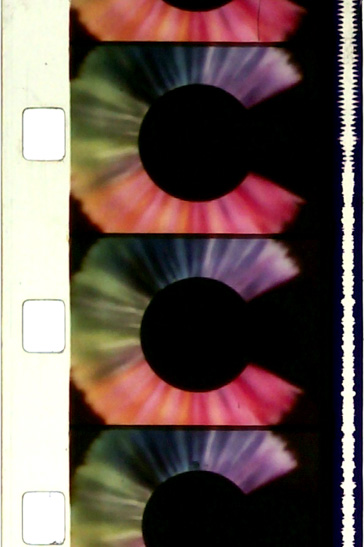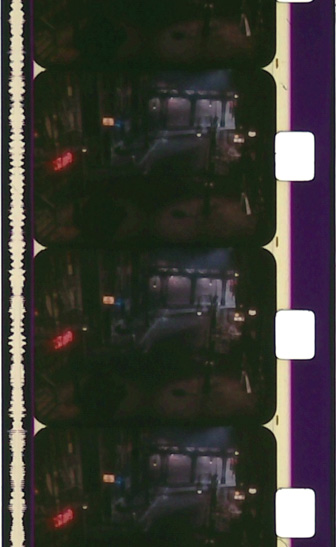|
Author
|
Topic: Super 8 optical sound.
|
|
|
|
|
|
|
|
|
|
|
|
|
|
|
|
|
|
|
|
|
|
|
|
|
Osi Osgood
Film God

Posts: 10204
From: Mountian Home, ID.
Registered: Jul 2005
|
 posted June 05, 2014 12:54 PM
posted June 05, 2014 12:54 PM




Hey Janice, is that "Starbird and Sweet William" you've got there?
Also, Disney super 8 and other studios, (Columbia) experimented with they're 200ft releases as optical super 8. I've ran into quite a few Disney's over the years, fewer Columbia optical shorts.
Wonderfully, MGM did a grand thing with their South African super 8 optical film library. Along with the main feature, "The Man Who Loved Cat Dancing", for instance, MGM would have before the feature began, a classic era MGM short, in sepiatone, and in most cases, it was one of those "Pete Smith Specialies".
The funny thing is that the shorts were absolutely spot on sharp super 8 opticals, while the 70's feature would often be grainly and hard to focus. They probably made a print from a 16MM flat print of an original scope feature, which meant that you came in on the image for the flat print, hence the very grainy look.
I've always felt that the optical super 8 films are a grand adventure. To this very day, new optical (old) optical super 8 titles still pop up for films I never knew existed on super 8 optical!
--------------------
"All these moments will be lost in time, just like ... tears, in the rain. "
| IP: Logged
|
|
|
|
|
|
|
|
|
|
Osi Osgood
Film God

Posts: 10204
From: Mountian Home, ID.
Registered: Jul 2005
|
 posted June 06, 2014 11:27 AM
posted June 06, 2014 11:27 AM




Dominique ...
I really wish I knew. I'm betting it was cost effectiveness as, being that, even with two passes on the print (one pass to print the image, the second to print the optical track), it would cut the costs and least to an extant, as you would have to have a laminate mag stripe, and then sync up and record all of those soundtracks after it comes back from the labs.
That's just an honest guess, but I can't be all that sure. Quite frankly, I would prefer mag stripe for it's obvious audio fidelity benefits, but hey, history is history.
By the way, great screenshots of those frames!
Another problem with optical sound print, (depending when they were manufactured) is that, as some of the screenshots show, the side without a optical track (sprocket side), has that dark purplish coating that totally obliterates the film stock markings, making it very hard to ascertain what kind of film stock was used.
Obviously, various forms of Eastman were first used, (there's still some debate as to whether any were actual techinoclor super 8 prints, as there have been memo's or letter stating that Technicolor experimented with super 8 and after all, many optical sound prints were placed in Technicolor cartridges which, usually, were filled with fadey Eastman, but I have a few prints in my collection that are 1969 optical, and yet, haven't faded a bit).) ...
During that period of late 60's to late 70's Fuji was also used, primarily in japan for they're optical prints, (I have a print of "Hooper" that has Japanese subtitles, perfect color and Fuji film stock) ...
and then KOdak SP started to be used a lot, which has tended to be brownish these days. Around late 81 or early 82, LPP started to be used and, of course, those print have perfect color.
They did, however, use as much of the poorer stock as long as possible. "Gorky Park" (until I learn different) was printed on a TERRIBLE Eastman "quick pink" stock, (such a shame), and they continued to use old Kodak SP film stock all the way to the end of super 8 optical sound, as I have a print of "Stand and Deliver" 1987/88?) that is on Kodak SP, apparently, and already has a slight brownish quality.
On the plus side, however, especially after the mid to late 70's, all optical sound super 8 seem to have impeccable focus, really sharp! ![[Smile]](smile.gif)
--------------------
"All these moments will be lost in time, just like ... tears, in the rain. "
| IP: Logged
|
|
|
|
|
|
|
|
|
|
|
|
|
|
|
|
|



 UBBFriend: Email this page to someone!
UBBFriend: Email this page to someone!
 Printer-friendly view of this topic
Printer-friendly view of this topic








![[Cool]](cool.gif)




![[Smile]](smile.gif)



